Hernan Cortes was a Spanish Conquistador known for his bravery, ambition, thirst for gold, brutality, and extraordinary leadership. Cortes was a self-made man who was the illegitimate son of a Spanish noble.
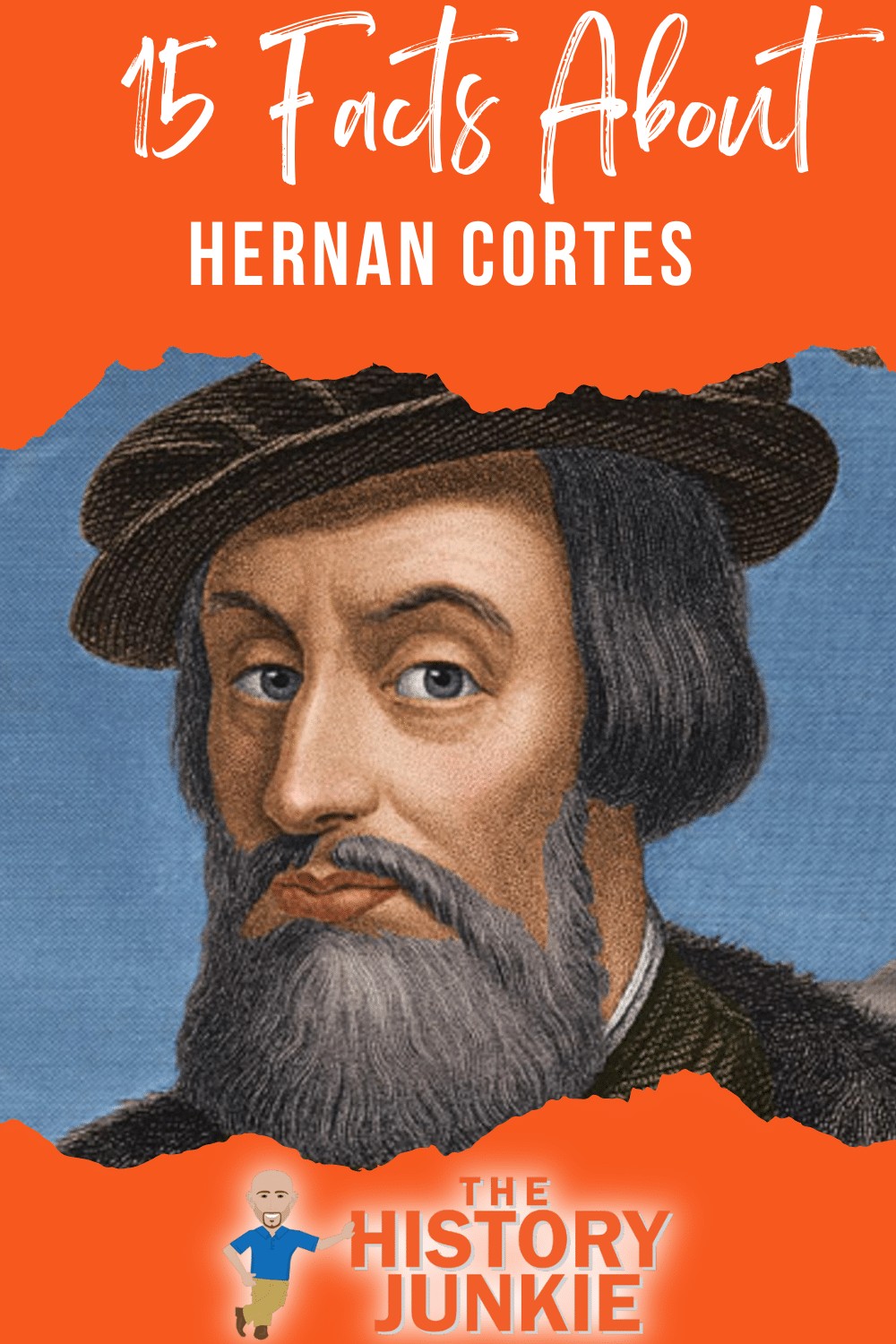
While Cortes accomplished much in his sixty-two years, he would become infamous for his actions against the Aztec Civilization.
Also Read: Famous Spanish Conquistadors
Hernan Cortes successfully defeated the Aztecs and destroyed their civilization.
The death of civilization did not come easy, and throughout, Cortes showed an uncanny ability to lead men through some of the darkest moments.
Despite the success and influence he had in building a New World, he is often remembered for his brutality toward the native people, including the Aztecs.
Jump to:
- 1. Hernan Cortes and Francisco Pizarro Were Related
- 2. He Was a Sickly Child
- 3. He Arrived in the New World at Age 18
- 4. He Earned an Esteemed Reputation in Cuba
- 5. Cortes Acquired His Greatest Asset for His Eventual Conquest from Conquered Natives
- 6. He Made Peace and formed Alliances with Natives That Despised the Aztecs
- 7. Hernan Cortes Massacred Many Natives At Cholula
- 8. Montezuma Received Cortes Peacefully
- 9. Cortes was Challenged by Another Conquistador
- 10. He was Almost Killed When He Returned to Tenochtitlan
- 11. Smallpox Devastated The Aztec Population
- 12. Cortes Conquered The Aztecs Using European Tactics
- 13. Hernan Cortes had a Complicated Family Tree
- 14. He Fell Out Of Favor With the King
- 15. Hernan Cortes Died Never Reaching His Goal
Ironically, those who accuse him of brutality toward the Aztecs ignore the centuries of brutality the Aztecs inflicted on the native populations around them that would push them into an alliance with Cortes that would ultimately destroy the Aztec Empire.
1. Hernan Cortes and Francisco Pizarro Were Related
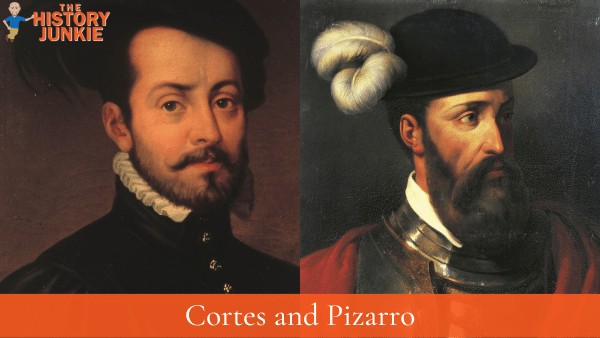
Hernan Cortes and Francisco Pizarro were two Conquistadors who became known for conquering the two largest civilizations in the New World.
Ironically, the two were second cousins who were related through Pizarro's father and Cortes's mother.
Cortés was born in 1485 in the town of Medellín, then a village in the Kingdom of Castile, now a municipality of the modern-day province of Badajoz in Extremadura, Spain.
His father, Martín Cortés de Monroy, born in 1449 to Rodrigo or Ruy Fernández de Monroy and his wife María Cortés, was an infantry captain of distinguished ancestry but slender means.
Hernán's mother was Catalína Pizarro Altamirano.
2. He Was a Sickly Child
The eventual conqueror of Mexico and the greatest civilization in the New World almost died when he was a young boy.
By the time he reached the age of 14, he did not resemble a warrior, and his parents did not foresee a career for him as a soldier or ship captain, and he was given a traditional Spanish education.
He was described as pale and sickly by his biographer and chaplain, but that would change as he got older.
As he hit the age of puberty, it seemed that the frailness dissipated, and he would begin to become the warrior that would eventually conquer the Aztecs.
3. He Arrived in the New World at Age 18
Christopher Columbus discovered the New World in 1492, just seven years after the birth of Hernan Cortes. He would grow up just as the Age of Exploration was exploding.
Also Read: Christopher Columbus Timeline
Hernan Cortes was originally scheduled to sail to the Americas with his family acquaintance and distant relative, Nicolás de Ovando, the newly appointed Governor of Hispaniola. However, Cortes suffered an injury and was unable to travel.
He spent the next year wandering around Spain, likely spending most of his time in the southern ports of Cadiz, Palos, Sanlucar, and Seville. He finally left for Hispaniola in 1504 and became a colonist.
Hernán Cortés arrived in Hispaniola in 1504 on a ship captained by Alonso Quintero, who was known for his mutinous conduct.
Quintero had tried to deceive his superiors and reach the New World before them in order to secure personal advantages. This behavior may have served as a model for Cortés in his subsequent career.
Upon his arrival in Santo Domingo, the capital of Hispaniola, the 18-year-old Cortes registered as a citizen. This entitled him to a building plot and land to farm.
4. He Earned an Esteemed Reputation in Cuba
Cortes accompanied Diego Velázquez de Cuellar in his effort to conquer Cuba. His efforts were successful, and Cortes impressed the leadership.
Velazquez was so impressed with Cortes that he secured a high political position for him in the colony. Cortes became secretary for Governor Velázquez and was twice appointed municipal magistrate of Santiago. He also received an encomienda, which gave him the right to use Indian labor for his mines and cattle.
Cuba would also give them the opportunity that would lead to the conquest of the Aztecs.
While in Cuba, the Spanish gained a foothold in the Yucatan Peninsula, and the governor began to send support to that area. Cortes was given the command to one of the fleets sent to support the Spanish in the Yucatan.
He arrived in Mexico in 1519. Upon his arrival, he met Geronimo de Aguilar, who was a Spanish priest who had learned the Maya language while in their captivity. He would become a valuable asset to Cortes when merged with his greatest asset that came later.
5. Cortes Acquired His Greatest Asset for His Eventual Conquest from Conquered Natives
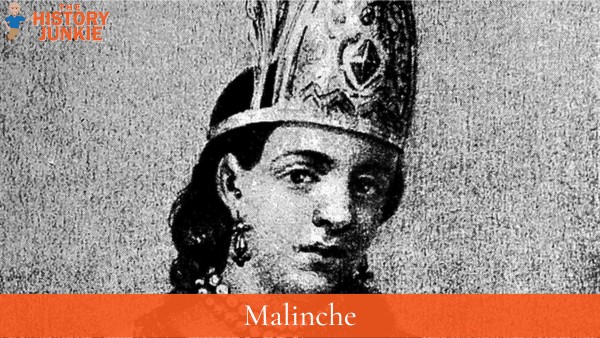
Upon his arrival, he was given a small group of men and began an expedition on the coast. During his expedition, he won a series of battles against the coastal natives that would lead to him receiving twenty young native women, all of whom he converted to Christianity.
Among these women was a young native named La Malinche.
Malinche would eventually become a mistress to Cortes, and the mother of his son Martin, but her value was more than the physical relations he had with her.
Malinche knew both the Nahuatl language and Chontal Maya, thus enabling Cortes to communicate with the Aztecs through Aguilar.
Her legacy would become controversial. Throughout most of history, she has been viewed as the savior of her people from the Aztecs, who were brutal people who enslaved her people and harvested them for pagan child sacrifice.
Others say that without her help, Cortes could not have conquered the Aztecs.
6. He Made Peace and formed Alliances with Natives That Despised the Aztecs
The Aztecs were hated among the local tribes that were paying tribute to the powerful empire. The Aztecs enslaved them, treated them as third-class citizens, and even harvested them for religious purposes.
Along his way to the Aztec capital of Tenochtitlan, he formed alliances with various local tribes, such as the Totonacs of Cempoala and the Nahuas of Tlaxcala.
This was the case for every tribe under Aztec rule.
The Otomis and Tlaxcalans fought against Spanish intrusion in a series of three battles. The battles were fierce, and the Spanish were surrounded on all sides.
Cortes began to release prisoners with messages of peace, and this influenced the two tribes that the Spanish shared a similar dislike for the Aztecs.
The native leadership was persuaded to help the Spanish rather than to kill them.
These alliances would give the manpower Cortes needed to conquer the Aztecs. Malinche would play an important role in securing these alliances.
7. Hernan Cortes Massacred Many Natives At Cholula
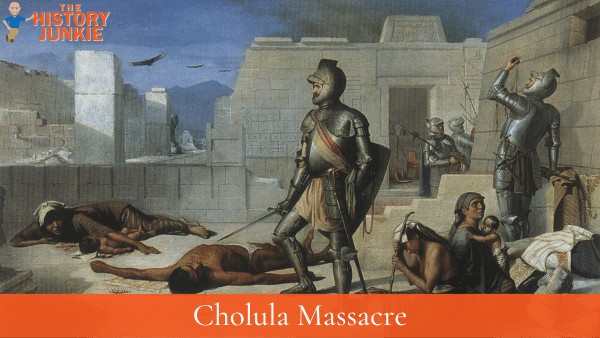
In 1517, Cholula seceded from the Tlaxcala Triple Alliance and joined the Aztec Empire. In 1519, the Tlaxcalans led Hernan Cortes and his troops to Cholula to attack the city as punishment for its betrayal.
The Spanish and Tlaxcalans arrived in Cholula and were welcomed with speeches and feasts. However, the Spanish soon became suspicious of the Cholulans' intentions. They claimed to have found trenches and dugouts with anti-cavalry spikes and piles of rocks on the rooftops.
The Tlaxcalans then persuaded Cortes into believing that the Cholulans were conspiring against him. Cortes ordered his men to massacre the unarmed Cholulans who had gathered in the city's central plaza. He then blocked the exits of the plaza, preventing anyone from escaping.
Tlaxcala warriors who had been stationed outside of Cholula rushed into the city and joined in the massacre. Over the next four days, the Spanish and Tlaxcalans raped, killed, looted, and burned Cholula. The Great Pyramid of Cholula was largely reduced to rubble.
No Spanish soldiers were killed in the massacre. The Cholulan leadership was executed, and the city was forced to rejoin the Tlaxcala Triple Alliance.
8. Montezuma Received Cortes Peacefully
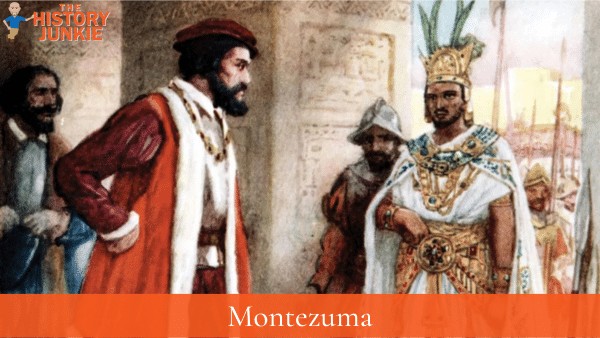
At the beginning of November 1519, the Spanish arrived in Tenochtitlan and were greeted peacefully by Montezuma.
Montezuma greeted them peacefully in order to learn their strengths and weaknesses. He overwhelmed the Spanish with gifts of gold and silver, but this generosity did not placate the greed of the Spaniards. They did not see the gold as gifts but as a sign of more to be plundered.
Shortly after receiving these gifts, Cortes learned that several Spaniards on the coast had been killed by Aztecs while supporting the Totonacs and decided to take Montezuma as a hostage in his palace, indirectly ruling Tenochtitlán through him.
It is surprising that Montezuma received the Spanish peacefully after the Cholula massacre and their alliance with the Tlaxcalans, who were enemies of the Aztecs.
This would be the fatal mistake that would begin to reshape Mexico.
9. Cortes was Challenged by Another Conquistador
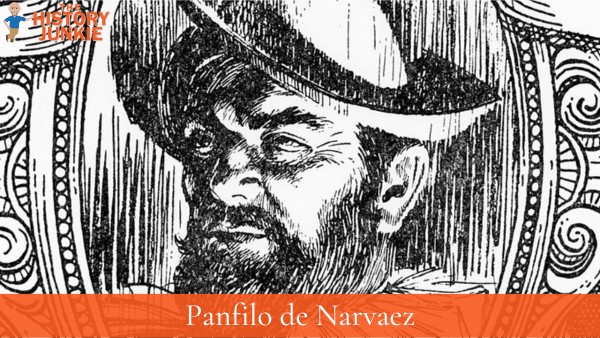
Hernan Cortes had gained control over Montezuma, but his control was anything but secure.
He was vastly outnumbered, and many did not trust the Spanish and disagreed with Montezuma bringing them into their capital peacefully.
To make matters worse, the man who gave him power and influence in Cuba, Governor Velazquez, had begun to seek retribution for Cortes disobeying orders. He sent another conquistador to confront him and end his expedition.
Panfilo de Narvaez was the conquistador sent to defeat Cortes. In response, Cortes left 200 men in Tenochtitlan and went to meet Narvaez.
Narvaez was defeated and, in battle, lost an eye. His remaining men were promised gold and then joined Cortes.
10. He was Almost Killed When He Returned to Tenochtitlan
On July 1, 1520, an event occurred in Tenochtitlan that changed the dynamic of the Aztec Empire.
Montezuma was killed.
According to Spanish accounts, he was stoned to death by his own people. Some claim that he was actually murdered by the Spaniards once they realized his inability to placate the locals. This event marked a turning point in the conquest.
With a hostile population rising against them, Cortes and his men made a difficult decision to flee to the neighboring city of Tlaxcala. The escape, known as the "Noche Triste" or the "Sad Night," was a perilous journey for the Spaniards.
As they made their way across the Tlacopan causeway, their rearguard faced a brutal massacre at the hands of the Aztec warriors.
During this chaotic escape, much of the treasure that Cortés and his men had looted from Tenochtitlan was lost, including their artillery.
The panicked retreat reflected the desperate situation they found themselves in, but it also marked a setback in their conquest of the Aztec capital.
However, they had already unleashed a powerful weapon that they did not know about.
11. Smallpox Devastated The Aztec Population
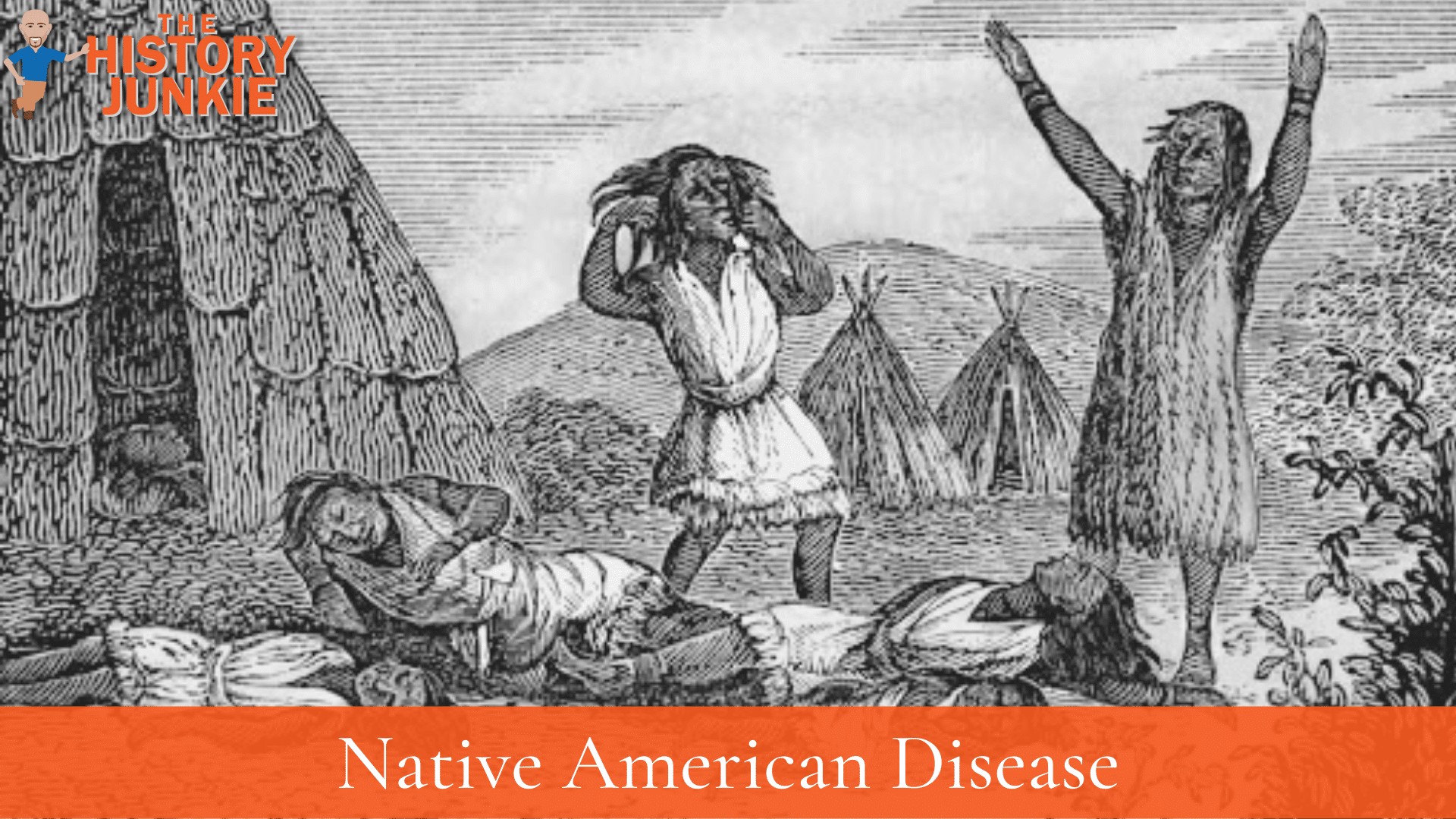
When Hernan Cortes arrived in the Aztec Empire in 1519, he unknowingly brought with him smallpox, a disease to which the native population had no immunity.
The Aztecs and other Native American tribes had never been exposed to this European disease before, and as a result, they had no natural defenses against it.
Smallpox rapidly spread among the Aztec population, causing devastating epidemics that decimated their numbers. The disease spreads through direct contact with infected individuals, as well as through contaminated objects and the air.
The effects of smallpox were catastrophic for the Aztecs. It weakened their military and political infrastructure, led to a breakdown in the social order, and caused a collapse in food production and resources.
It is estimated that smallpox, along with other diseases brought by the Spanish, killed a significant portion of the Aztec population, possibly up to 90% or more.
The loss of population significantly weakened the Aztecs and made them vulnerable to the Spanish Conquistadors.
12. Cortes Conquered The Aztecs Using European Tactics
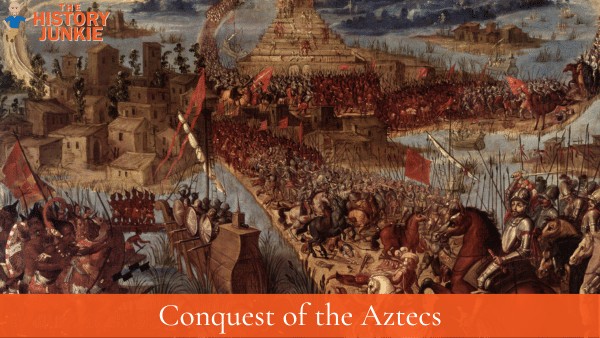
After escaping the Aztec capital, the survivors managed to reach Tlaxcala, although they suffered a devastating loss of 870 men.
With the support of their allies and reinforcements from Cuba, Cortés and his men ultimately emerged victorious.
Cortes adopted a strategy of attrition against Tenochtitlan, effectively cutting off their supplies and subjugating the cities allied with the Aztecs.
To minimize casualties in urban combat, Cortes wisely constructed brigantines on the lake and systematically dismantled sections of the city.
The Aztecs, in a desperate move, retreated to Tlatelolco and even launched successful ambushes against the pursuing Spanish forces, causing significant casualties.
Nonetheless, they were eventually subdued, marking the final stronghold on the island to resist the conquistadors.
Hernan Cortes had defeated the Aztecs, and with the capture of Cuauhtemoc, The last Aztec Emporer, he claimed the land for the Spanish and renamed the city Mexico City.
13. Hernan Cortes had a Complicated Family Tree
Hernan Cortes was a man of his time. His views on the natives, conquest, and Christianity were common among the ruling class in Europe and translated to the Americas as well.
Despite the biblical belief that adultery and fornication are wrong, Cortes had many mistresses, which resulted in children from many different mothers.
The result is a family tree with many different branches and a legacy that is hypocritical.
This complex family tree is difficult to follow and is probably incomplete because there were most likely other children that were born to him that he did not know about or were not recorded.
One of the more famous children was the son born to him from Malinche, his guide throughout the conquest.
14. He Fell Out Of Favor With the King

Cortes always seemed to have disdain for leadership, and this can be traced back to his parents.
When he arrived in Cuba as a young man, he quickly gained favor with the governor, and as the years passed, his ambitions grew, and he fell out of favor with the governor because the governor did not trust him.
When he arrived in Mexico, he disobeyed orders, and after his conquest, he set up a direct line to the king in order to bypass his superiors.
His treatment of Montezuma seemed somewhat arrogant.
When following this pattern of behavior, it should not come as a surprise that he would fall out of favor with King Charles V of Spain.
Ironically, the relentless quality he had made him a great conqueror but a poor servant to a king. It would have been better for him if, after the conquest, he would have moved on to another conquest.
After his conquest, he embarked on years of controversy. He fought another Conquistador in Honduras and then in Guatemala and other areas of New Spain.
While King Charles V showered much praise on him, it had become clear that other conquistadors and even those close to the king had become suspicious of Cortes.
He continued to make many discoveries, including the Baja Peninsula of California, but his troubles with others continued. Many lawsuits were filed against him, and he returned to Spain to defend himself. This would be his second trip back to Spain and would be his last.
15. Hernan Cortes Died Never Reaching His Goal
Despite all the success he had and how he would be remembered in future generations, he did not accomplish everything he wanted.
Here is an excellent description of his final years by History Today:
Cortéz was not the master of Mexico. But having won the territory by force, he found it difficult to rule. As the years went by, Cortéz, the self-styled Captain General of New Spain of the Ocean Sea, administered the Colony in an increasingly arrogant and regal manner. The colony was full of men as ambitious and ruthless as himself who formed themselves Into pro and anti-Cortez parties. Rumours were spread that he had murdered his wife, complaints made about this highhanded style, and plots hatched against him. Finally, officials were despatched by Spain to help administer the colony, which did not improve Cortéz already volatile and bitter temperament.
Cortéz never achieved the title of Viceroy he so desired. He had made too many enemies. In 1540, he gave up and returned to Spain, leaving behind the colony he had created by the force of his personality. He would never truly rule the empire he helped create. But, even so, he had established a form or rule that was every bit as influential as Britain's interventions in North America while the independent USA adopted the parliamentary democracy of its former colonial master, most South American states, or at least the generals and dictator politicians that rule them, favour something more along the lines of Cortéz and the conquistadors, and with equally bloody results.
